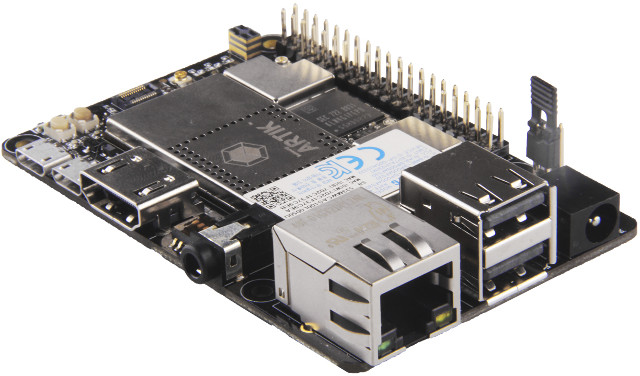Samsung Artik 530 is a module designed for the Internet of Things based on a quad core Arm Cortex A9 processor, and supporting Ethernet, dual band WiFi, Bluetooth 4.2, and 802.15.4/Zigbee/Thread connectivity, as well as exposing display and camera interfaces, and of course various I/Os.
The module was launched about one year ago with a developer kit that cost $189 and up, but Samsung has now worked with Seeed Studio to launch a cheaper developer board – called Eagleye – based on the secure version of the module (Artik 530s) and mostly following Raspberry Pi form factor in order to take advantage of its hardware ecosystem.

Eagleye 530s board specifications:
- SoC – Unnamed quad core Arm Cortex A9 processor @ 1.2GHz with 3D graphics accelerator
- System Memory – 1GB DDR3
- Storage – 4GB eMMC flash, SD card slot
- Connectivity
- 802.11a/b/g/n dual band SISO (2.4G/5G)
- Bluetooth 4.2(BLE+Classic)
- Zigbee/Thread 802.15.4
- Gigabit Ethernet port (RJ45)
- Video Output – HDMI port
- Audio – 1x Headphone Jack
- Camera I/F – 1x MIPI CSI header
- USB – 2x USB 2.0 type A ports, 1x micro USB OTG Type-B
- Debugging – 1 x Micro USB UART Type-B
- Expansion – 40-pin GPIO expansion header compatible with Raspberry Pi
- Power Supply – 5V via DC jack or micro USB UART connector
- Dimensions – 87mm x 58.5mm x 20mm
- Weight – 50g
Some of the add-on boards supported by the board include GrovePi+, ReSpeaker 4-mic array, and other Raspberry Pi HAT boards should also work. I could not find a wiki or software documentation specific to the board yet, but last time I checked, Artik 530 module ran a Fedora image (now switched to Ubuntu 16.04) as explained in Samsung’s Artik 5/7/10 getting started guide.
Eagleye 530s is now up for pre-order for $79 on Seeed Studio with shipping planned for the end of April.

Jean-Luc started CNX Software in 2010 as a part-time endeavor, before quitting his job as a software engineering manager, and starting to write daily news, and reviews full time later in 2011.
Support CNX Software! Donate via cryptocurrencies, become a Patron on Patreon, or purchase goods on Amazon or Aliexpress





